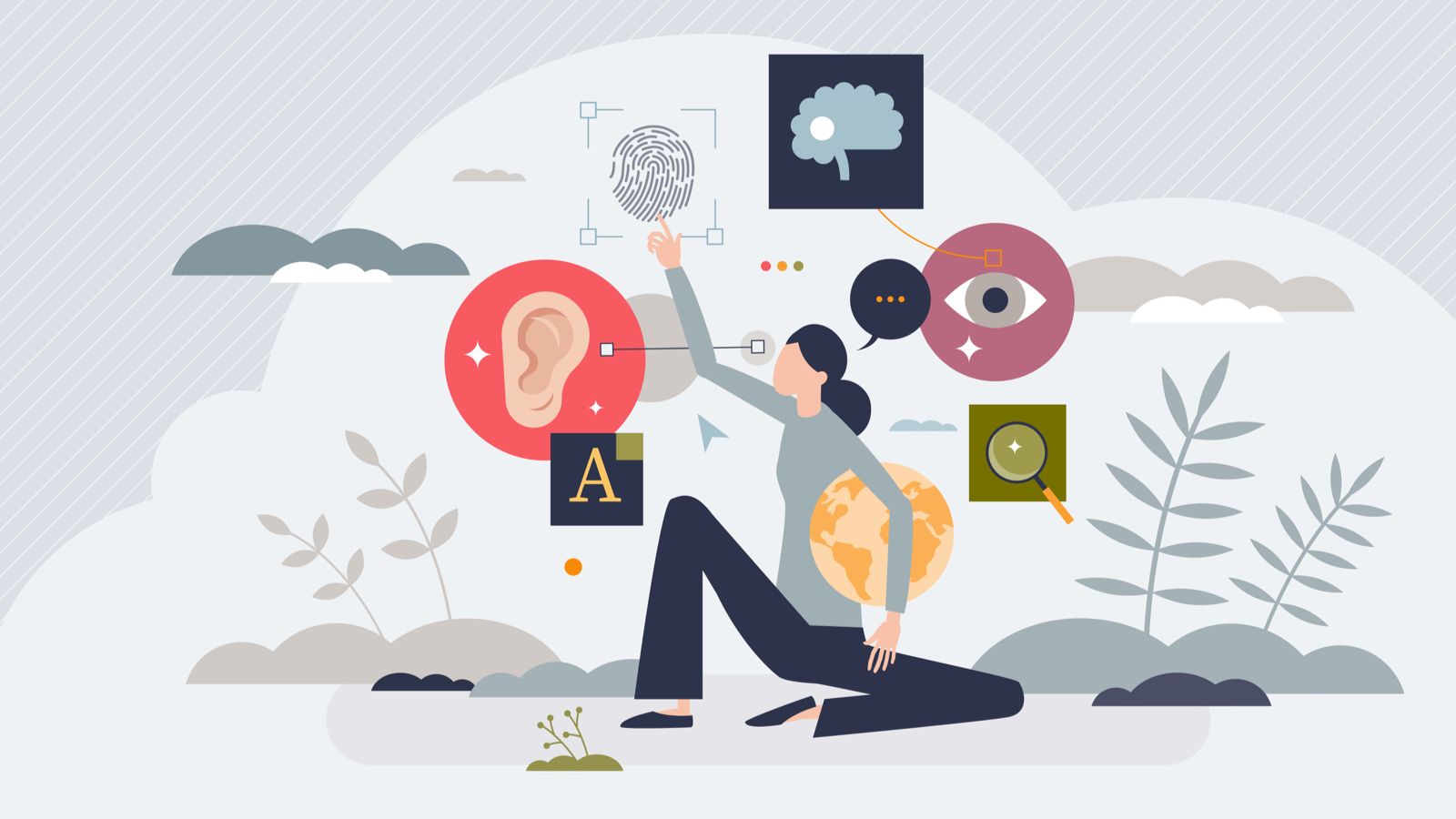- Unaligned Newsletter
- Posts
- AI in Learning Disabilities Support
AI in Learning Disabilities Support
Thank you to our Sponsor: PineAI
Pine is an AI-powered autonomous agent that acts on behalf of consumers to contact businesses and resolve issues—like billing, disputes, reservations, cancellations, general inquiries, and applications. Pine handles the back-and-forth for you. Users save time, money, and stress—no waiting on hold, no endless forms, no wasted effort. Just real results.
Try PineAI today!

As AI becomes increasingly integrated into education, healthcare, and assistive technology, one of its most meaningful and potentially transformative roles is in supporting individuals with learning disabilities. AI is not just helping to accommodate differences in learning styles. It is fundamentally reshaping how we identify, address, and empower people with conditions such as dyslexia, ADHD, autism spectrum disorder (ASD), dyscalculia, and language processing disorders.
Here we explore the long-term significance of AI in this space, from diagnosis and early intervention to personalized learning, communication support, behavioral modeling, and beyond. We also address the ethical, social, and implementation challenges involved in deploying AI for this purpose.
I. Understanding Learning Disabilities: A Quick Primer
Learning disabilities are neurologically-based processing challenges that interfere with basic learning skills like reading, writing, and math, as well as higher-order skills such as organization, time planning, abstract reasoning, and memory. Common types include:
Dyslexia: difficulty in reading, spelling, and decoding words
Dysgraphia: trouble with writing or fine motor skills
Dyscalculia: difficulty with number-related concepts and calculations
ADHD: attention deficits and impulsivity that affect learning and task completion
ASD: varying levels of difficulty with social communication, repetitive behaviors, and sometimes learning differences
Traditional support systems often rely on human intervention such as special educators, speech-language pathologists, and therapists. While effective, these resources are limited, expensive, and not always accessible. This is where AI steps in.
II. Early Detection and Diagnosis: AI as a Cognitive Scanner
AI systems, particularly those using machine learning and computer vision, are capable of analyzing subtle behavioral patterns far earlier than traditional observation.
Examples of AI in Early Detection:
Eye-tracking and gaze analysis: Computer vision systems can monitor where and how a child looks while reading or interacting with learning materials. Anomalies in gaze duration, regression (backward eye movement), and saccades can indicate dyslexia or attention deficits.
Speech analysis tools: AI models can detect language processing issues by evaluating a child’s phoneme recognition, pronunciation patterns, pauses, and verbal fluidity. This is crucial in identifying language delays and speech disorders.
Behavioral prediction models for ASD: Using longitudinal data from wearables and video footage, AI can pick up repetitive motions, social avoidance patterns, and communication deficits that suggest autism, often earlier than traditional clinical observation allows.
These diagnostic AI systems do not replace human professionals, but they can triage and flag individuals in need of further evaluation, ensuring earlier and more equitable intervention.
Thank you to our Sponsor: Context
Context is the all-in-one AI office suite built for modern teams, seamlessly unifying documents, presentations, research, spreadsheets, and team communication into a single intuitive platform. At its core is the Context Engine, a powerful AI that continuously learns from your past work, integrates with your tools, and makes your workflow a breeze.

III. Personalized Learning at Scale
Personalization is a key promise of AI in education, and it holds particular importance for learners with disabilities who often require customized pacing, multimodal inputs, and differentiated assessments.
Adaptive Learning Systems
AI-driven platforms can:
Tailor content difficulty dynamically based on the learner’s pace and error patterns
Reformat material from text to audio or visual formats automatically
Present alternative question types based on the student’s response profile
Track learning fatigue or frustration levels and adjust session intensity accordingly
For example, an AI tutor supporting a student with dyslexia might use voice-based interaction and image-assisted comprehension. For a student with dyscalculia, it might offer visual-spatial representations of math problems instead of pure equations.
Intelligent Feedback
AI systems can provide non-judgmental, consistent feedback in real time, which is critical for students with low confidence or anxiety around learning. The feedback can be immediate and multi-layered, explaining not just what the mistake was, but why it was made, and how to correct it.
Multi-Sensory Engagement
AI tools can integrate multiple sensory modalities to enhance learning. These include:
Text-to-speech for reading comprehension
Voice-controlled interfaces for writing and navigation
Gesture recognition for interactive tasks
Haptic feedback for learners with sensory integration needs
This engagement approach mirrors the structure of therapies used by specialists but allows for independent, anytime access.
IV. AI-Powered Communication Aids
Many learners with language-related learning disabilities or autism struggle with communication, both expressive and receptive. AI is enabling entirely new ways for them to express themselves and engage with others.
Natural Language Processing (NLP) and Predictive Text
Smart typing interfaces, powered by NLP, can:
Predict and auto-complete words or phrases based on past usage
Suggest more accurate or grammatically appropriate language
Simplify complex vocabulary or sentence structures
Translate spoken input into text or vice versa in real time
These systems allow users to bridge the gap between thought and expression, often reducing the need for human intervention.
Emotion Recognition and Social Coaching
AI models trained on affective data can analyze facial expressions, vocal tones, and body posture to infer emotional states. These insights can be used in:
Social story simulations to help individuals with ASD navigate interpersonal scenarios
Real-time feedback systems that prompt the user when they may need to clarify their tone, maintain eye contact, or respond empathetically
Digital avatars that model appropriate behavior and offer positive reinforcement
This helps to build social cognition and emotional regulation in a way that feels natural and self-directed.
V. AI Assistants as Learning Companions
Beyond tools and interventions, AI can take the form of interactive companions that accompany students on their learning journeys.
These assistants can:
Track progress across domains and identify emerging struggles
Maintain a memory of preferences, frustrations, and successful strategies
Schedule breaks, gamify tasks, and suggest calming activities
Remind students to stay organized, take notes, or follow through on homework
These AI systems act as cognitive scaffolds, reducing the mental load of executive functioning challenges common in ADHD or dyslexia.
VI. Ethical Considerations and Risks
The benefits of AI in learning disabilities support are immense, but they come with significant responsibilities:
1. Bias and Representation
AI systems trained on non-diverse data may misinterpret the behavior of neurodivergent users or overlook cultural nuances. For instance, an AI might flag direct speech as “rude” in autistic individuals without understanding their communication style.
2. Privacy and Surveillance
The use of behavioral data, voice recordings, facial recognition, and biometric sensors raises questions about consent, especially with minors. There must be stringent safeguards for data minimization, anonymization, and parental or user control.
3. Over-Reliance and Dependency
While AI can offer immense support, there is a risk of over-reliance. It is essential to maintain a balance between AI augmentation and the development of self-advocacy, real-world social skills, and independence.
4. Accessibility and Inequality
The most advanced AI systems are often not available to those who need them most. Equitable deployment must be prioritized, particularly in low-resource schools and underfunded special education programs.
VII. The Future Outlook
As the field advances, AI will likely move toward more emotionally aware, context-sensitive, and self-improving systems that can understand learners not just as data points, but as whole individuals. Some future developments to anticipate:
Synthetic voices that reflect the user’s personality, not just a generic tone
Emotionally intelligent AI that understands nuance in mood and fatigue
Wearables that adjust learning environments in real time (light, sound, breaks)
Human-in-the-loop systems where therapists and AI co-manage a student’s plan
Additionally, partnerships between AI developers, special educators, neuropsychologists, and the disabled community will become increasingly important in ensuring tools are both effective and empowering.
AI is offering a rare opportunity to fundamentally reshape how we support individuals with learning disabilities, not by trying to "fix" them, but by recognizing and amplifying their strengths, removing systemic barriers, and fostering environments where they can learn with dignity and autonomy. Done correctly, AI can serve not just as a tool, but as an ally in the lifelong process of learning and growth.
As we build these systems, we must remain deeply human-centered. Because behind every dataset is a person who deserves to be understood, supported, and celebrated.
Just Three Things
According to Scoble and Cronin, the top three relevant and recent happenings
OpenAI’s AI Can Now Think, Act, and Execute Tasks for You
OpenAI has introduced the ChatGPT agent, a new feature that allows ChatGPT to complete complex, multi-step tasks by reasoning and taking actions within a secure virtual environment. This agent combines previous OpenAI capabilities like browsing, coding, file handling, and task planning into a unified system that can act on behalf of the user. It can search the web, run code, interact with websites, fill out forms, generate spreadsheets or slide decks, and analyze data, all while following user instructions. The system pauses for user input when needed and includes safety features like site restrictions, monitoring, and limited memory use. The ChatGPT agent began rolling out on July 17, 2025, to Pro, Plus, and Team users, with Enterprise and Education access coming soon. Pro users receive 400 agent uses per month, while Plus and Team users get 40. OpenAI
Lovable Hits Unicorn Status with $200M Series A Just 8 Months In
Lovable, a Stockholm-based AI startup, reached unicorn status just eight months after launch by raising $200 million in Series A funding at a $1.8 billion valuation. Its tool lets users build apps and websites using natural language. With over 2.3 million users and $75 million in annual recurring revenue, Lovable has attracted major backers including the CEOs of Klarna and Slack's co-founder. TechCrunch
AI’s Hidden Role in Job Cuts
Many companies publicly downplay AI’s role in job cuts, citing restructuring or other reasons. However, experts and internal reports suggest AI is quietly driving more layoffs than acknowledged. As AI tools automate tasks, firms reduce staff without clearly linking it to technology. Analysts warn this lack of transparency may mask the true impact AI is having on the workforce. CNBC






